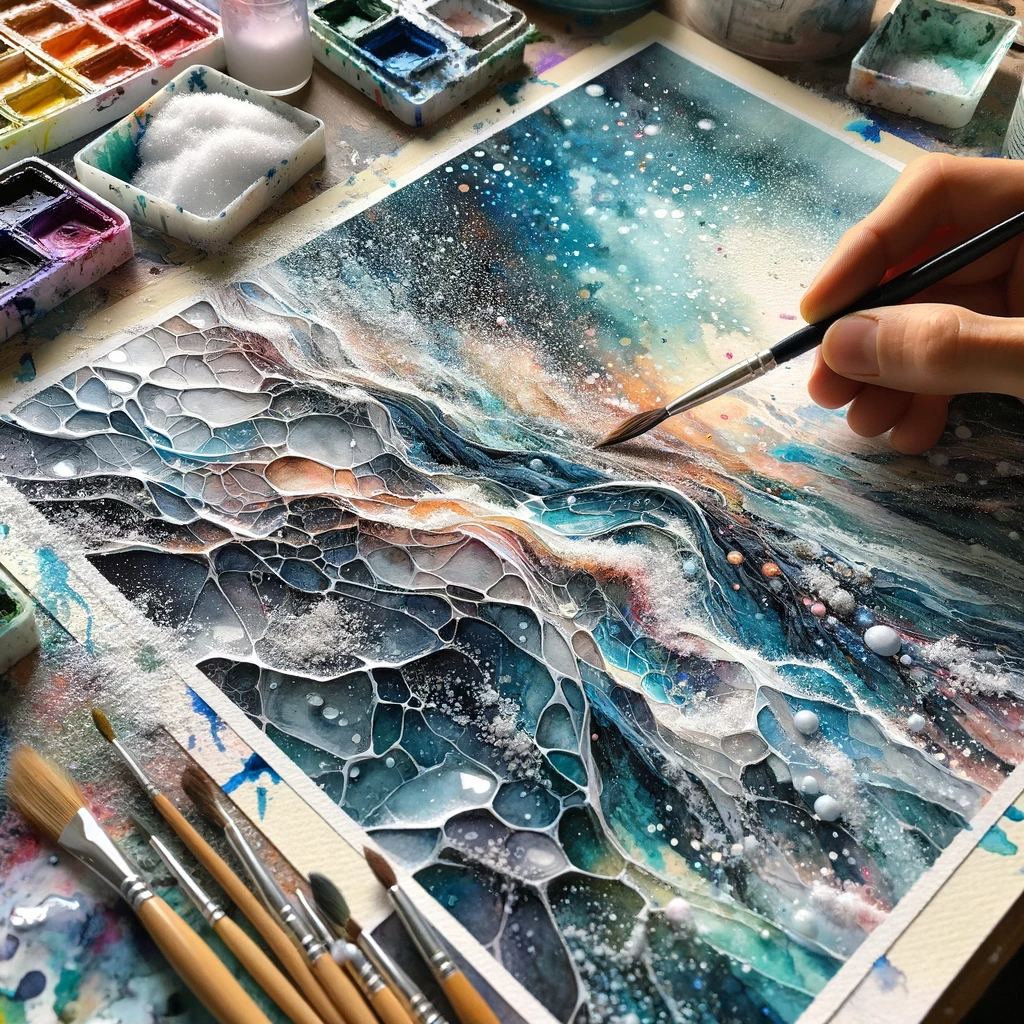In the realm of watercolor painting, texture plays a pivotal role in bringing artwork to life. It’s the subtle nuances and intricate details that can transform a simple painting into a masterpiece that captivates the viewer’s imagination. For English writers and artists, mastering the art of creating texture in watercolor paintings is an invaluable skill that can enhance the visual storytelling of their narratives.

The Essence of Texture in Watercolor
Texture in watercolor paintings adds depth, interest, and realism, enabling artists to mimic the natural world’s complexity or to imbue their work with abstract and expressive qualities. Whether it’s the roughness of a rocky landscape, the delicate veins of a leaf, or the ethereal quality of a dreamy backdrop, textures enrich the visual experience.
Materials and Tools for Texture
The journey to creating textured watercolor artwork begins with the right materials. Rough or cold-pressed watercolor paper can naturally contribute to a textured effect. Brushes of various shapes and sizes, along with unconventional tools like sponges, plastic wrap, and salt, can be employed to produce unique textures.
Techniques for Creating Texture
- Wet-on-Wet Technique: By applying wet paint onto a wet surface, artists can achieve soft, diffused textures that are ideal for backgrounds and dreamlike scenes.
- Dry Brush Technique: Dragging a dry brush with minimal paint over a dry surface creates rough, scratchy textures, perfect for depicting foliage, bark, or hair.
- Salt Technique: Sprinkling salt on wet paint and letting it dry before brushing it off can create starburst or snowflake patterns, adding a magical, granular texture to the artwork.
- Saran Wrap Technique: Pressing plastic wrap onto wet paint and leaving it to dry can form fascinating, abstract textures reminiscent of stained glass or flowing water.
- Splattering: Using a toothbrush or a stiff brush to splatter paint onto the paper can add a lively, random texture, useful for creating the impression of rain, spray, or textured surfaces.
- Masking Fluid: Applying masking fluid to preserve white or light areas of the paper can create sharp contrasts and defined textures once the fluid is removed after painting.
Integrating Textures into Your Artwork
The key to effectively incorporating texture into watercolor paintings lies in observation and experimentation. Studying the textures found in nature and around us can provide endless inspiration. Experimenting with different techniques and combinations can lead to discovering your unique style of textural expression.
Tips for English Writers
For writers venturing into the world of watercolor, using textured techniques can add a compelling visual layer to your stories. Illustrating scenes or characters with attention to texture can make your narratives more immersive, allowing readers to not only envision but almost ‘feel’ the settings and emotions.
Conclusion
Texture in watercolor artwork is not just about adding visual complexity; it’s about evoking emotion and connecting with the viewer on a sensory level. By mastering the techniques for creating texture, English writers and artists can enhance their storytelling, making their watercolor paintings not just seen but experienced. Embrace the challenge, and let your textured watercolors tell a story that words alone cannot.
